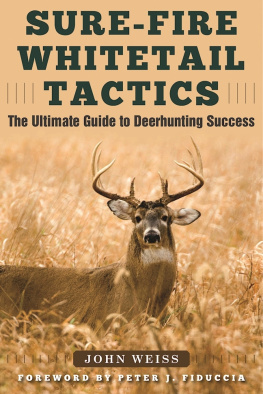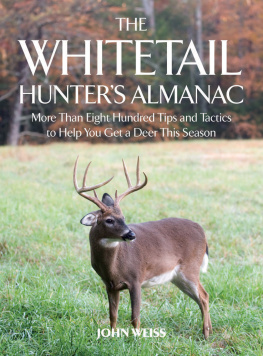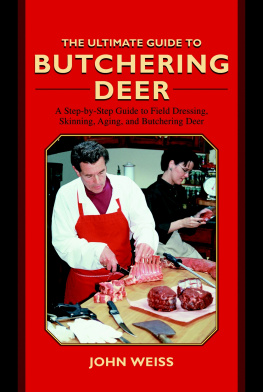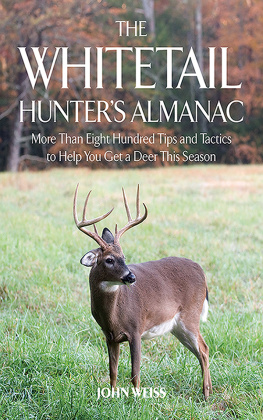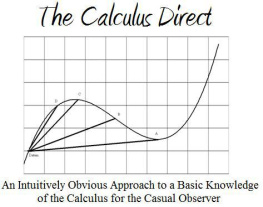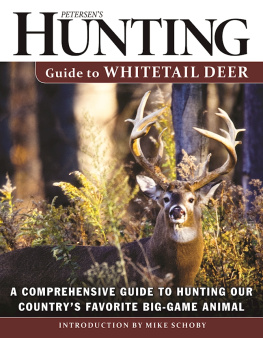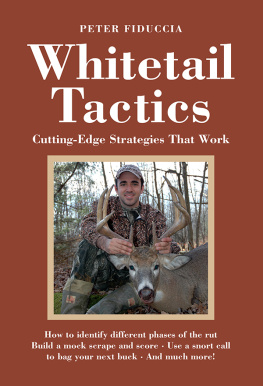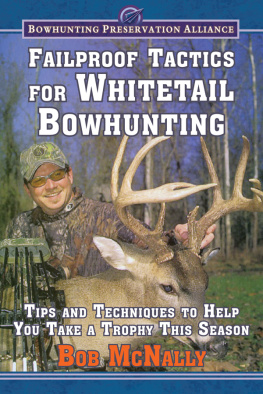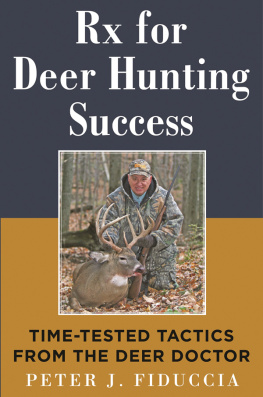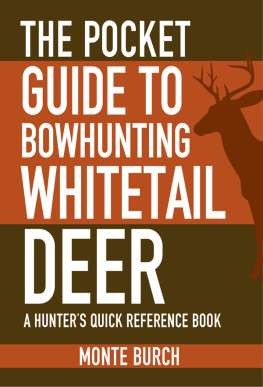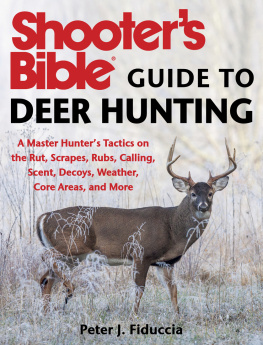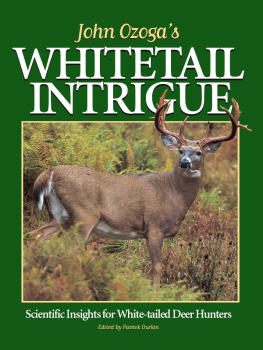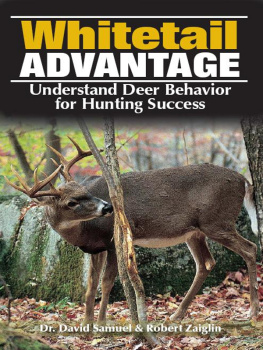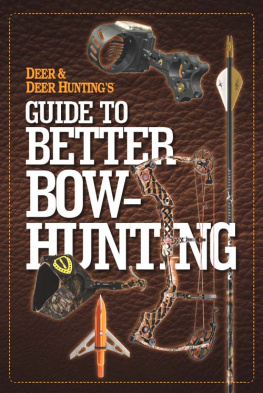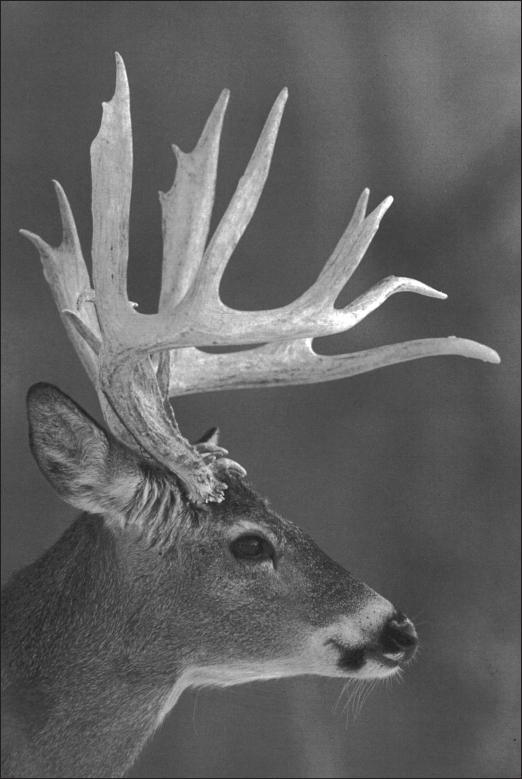
Ted Rose
Copyright 2001, Woods N Water, Inc. and Bookspan
First Skyhorse Publishing edition copyright 2016
Foreword copyright 2016 Peter Fiduccia
All rights reserved. No part of this book may be reproduced in any manner without the express written consent of the publisher, except in the case of brief excerpts in critical reviews or articles. All inquiries should be addressed to Skyhorse Publishing, 307 West 36th Street, 11th Floor, New York, NY 10018.
Skyhorse Publishing books may be purchased in bulk at special discounts for sales promotion, corporate gifts, fund-raising, or educational purposes. Special editions can also be created to specifications. For details, contact the Special Sales Department, Skyhorse Publishing, 307 West 36th Street, 11th Floor, New York, NY 10018 or .
Skyhorse and Skyhorse Publishing are registered trademarks of Skyhorse Publishing, Inc., a Delaware corporation.
Visit our website at www.skyhorsepublishing.com.
10 9 8 7 6 5 4 3 2 1
Library of Congress Cataloging-in-Publication Data is available on file.
Cover design by Tom Lau
Cover photo credit: iStockphoto
All interior photos by John Weiss unless otherwise indicated.
Additional photos: by Wayne Laroche.
Print ISBN: 978-1-5107-0815-0
Ebook ISBN: 978-1-5107-0816-7
Printed in the United States of America.
Table of Contents
Foreword
There are thousands of communications professionals within the outdoor industry, many of whom specialize in writing about white-tailed deer. Only a handful, however, have been able to achieve the level of respect and esteem from both their readers and peers as John Weiss has garnered. This is a testament to his skills and knowledge on all aspects of hunting whitetails.
Long before I became involved in an outdoor career, I regularly read magazine articles and books about deer-hunting strategies in publications such as Field & Stream , Outdoor Life , and Sports Afield . Interestingly, the deer-hunting articles in these publications that I consistently deemed as noteworthy and filled with concise information almost all seemed to be penned by John Weiss.
Weiss was among the few chosen whitetail pros that highly recognized top outdoor magazine editors, including Vince Sparano, Lamar Underwood, Jay Cassell, and Sid Evans, entrusted to supplement the pages of their magazines. It is no surprise that these editors favored him, as his highly informative data and expertise have the ability to take a readers deer-hunting tactic skills to the next level.
Weisss writing style has always been straightforward. He gets his points across to his readers without an excess of propaganda or elaboration. More importantly, his skills and understanding of the white-tailed deers biology, behavior, and anatomy is impressive and second-to-none. In fact, of the countless whitetail authorities in the outdoor industry, Weisss stock is like fine heavy creamit naturally rises to the top.
Weisss writings make it crystal clear that he has gained his deer-hunting skills the hard waythrough trial and error and inevitable total success. As a highly competent deer hunter he evolved into a superb deer-hunting authority. For decades, Weisss position as one of the nations most prolific deer-hunting communicators has been unchallenged, and he continues to be a standout in the deer-hunting community.
No matter how many articles or books I have read by John Weiss there is always one constant. I enjoy reading and gain knowledge from his writings each and every time. That statement continues to hold true in a re-reading of Weisss classic Sure-Fire Whitetail Tactics .
In this book, you will find countless tidbits of solid advice written in an easy-to-read and comprehensible manner. Weiss addresses many topics that hunters want to know more about including: whitetail staging areas, the effects of moon phase, how to locate and hunt funnels, the different stages of the rut, and how to use aerial photos. Here he shares his most guarded whitetail strategies in order to help readers put their tags on a mature white-tailed buck. Other chapters include cultivating food plots to attract deer, GPS secrets, and one of my favorite chaptershow to learn to stop a buck dead in his tracks from more than 100 yards away!
I can assure anyone reading this book that whether you are a seasoned veteran deer hunter or a novice, you will gain valuable deer-hunting skills and benefit from the know-how from the pages within this volume.
After you have finished reading this book, Im certain you, too, will be impressed with Weisss deer-hunting expertise and that he will become one of your favorite deer-hunting authorities.
Peter Fiduccia, Award-winning journalist,
TV host, and author
Summer 2016
Chapter 1
Terrain Aerial Photos Tell All
Because the definition of scouting is an attempt to find something by conducting a search, the deer hunter who does not make use of aerial photos cannot possibly hope to take home big bucks on a regular basis.
One exception to this rule is an acquaintance of mine by the name of Mule Morris, who lives in central Tennessee. Morris, then sixty-five, has taken a nice buck every year he has hunted. The reason for his success is that he hunts exclusively upon the 520-acre homestead farm where he was born and has lived all his life. As a result, if you know him well, and are able to gain permission to hunt his acreage, theres no need to do any scouting. Mule will simply point out any number of places where you can go sit on opening morning, and no matter which place you select, hell bet a dollar your buck will be hanging in his barn by sundown. To the best of my knowledge, hes never had to reach for his wallet.
In virtually every other circumstance, however, aerial photos are essential to a hunters success.
My regular hunting partner Al Wolter seconds that scouting axiom. For more than twenty years, Wolter worked for the U.S. Forest Service, managing hundreds of thousands of acres of national forest lands in several states.
In fact, Wolter says, the topographical maps we deer hunters have used for many years yield only a fraction of the information aerial photos do.
TAKING A CLOSER LOOK
A dedicated whitetail hunter with more than 100 bucks to his credit, Wolter religiously uses aerial photos every hunting season. Hes puzzled as to why others do not utilize this invaluable tool as well.
I can remember sitting in my office studying aerial photos to compile a new forest management plan for a given region, he recently recalled, and it was often difficult to pay attention to my work. I began spotting generation-worn deer trails leading to and from food plots such as mast-bearing oak trees, and this tempted me to begin evaluating how animals were living and moving in that specific area. After that, Id sometimes even begin daydreaming where Id place a stand to have the best chance at bushwhacking a nice buck.
Aerial photographs came into widespread use in the early 1930s when Congress passed the Agricultural Adjustment Act. This was during the Depression, and the goal of the AAA was to assist farmers in establishing and maintaining a balance between crop and livestock production and national food-consumption needs. It quickly became apparent that virtually any landform could be measured and studied in only a fraction of the time with aerial photos than by actually walking the ground, dragging surveyors chains, and then drawing maps.
Next page
